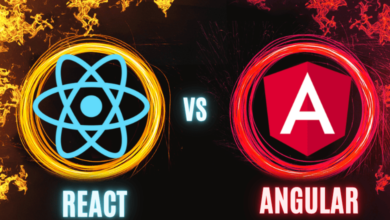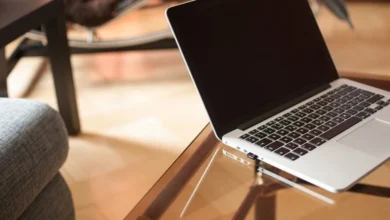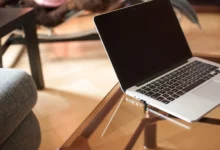Comparing Different Leak Testing Methods: Where Does Seal-Check Stand?

Leak testing is a crucial part of the quality assurance process for various products, from vehicles to electronic devices, food packaging, and even pharmaceuticals. A faulty seal or tiny leak can compromise product integrity, potentially leading to significant losses or hazards. To mitigate such risks, manufacturers rely on several leak testing methods, each offering unique advantages and drawbacks. One newer method gaining traction in the industry is the “Seal-Check” method. In this article, we will explore the most popular leak testing techniques and understand where Seal-Check fits in the larger spectrum.
Pressure Decay Test
Overview: The pressure decay test, one of the most commonly utilized techniques, measures the change in pressure over a set period. If there’s a leak, the pressure inside the test part will drop.
Pros:
- Simple setup and relatively quick results.
- Suitable for various applications, from small electronic components to larger assemblies.
Cons:
- Not ideal for larger volumes because small leaks might not be detected within a reasonable time.
- Can be affected by temperature changes.
Bubble Emission Test
Overview: Here, the product is submerged in water, and pressure is applied. If there’s a leak, bubbles will emerge.
Pros:
- Visual detection of leaks, which is straightforward and intuitive.
- Works well for irregularly shaped or large items.
Cons:
- Can be messy and requires water disposal.
- Only detects leaks that are large enough to emit bubbles.
Helium Leak Testing
Overview: This method involves filling the test item with helium and checking for its escape. Since helium is a small, light molecule, it can detect even minute leaks.
Pros:
- Highly sensitive, detecting very small leaks.
- Quantitative, allowing for precise measurements.
Cons:
- More expensive due to helium costs.
- Requires specialized equipment.
Ultrasonic Leak Detection
Overview: This technique detects the ultrasonic sound waves produced when a gas or liquid escapes through a leak.
Pros:
- Can detect leaks from a distance.
- Useful in noisy environments because it focuses on specific ultrasonic frequencies.
Cons:
- Requires specialized training to interpret results.
- May not detect slow, tiny leaks.
Seal-Check Method
Overview: The Seal-Check method is a more recent development in the leak testing arena. While the specifics can vary by application, in general, the Seal-Check method uses a combination of technologies, often including non-destructive methods, to check the integrity of seals in products.
Pros:
- Comprehensive, often blending multiple detection strategies to offer reliable results.
- Adaptable to a range of product sizes and types.
- Can detect both gross and fine leaks.
Cons:
- Might be more expensive than some traditional methods.
- Requires training for accurate interpretation.
Integrated Technologies within Seal-Check
The Seal-Check method’s adaptability stems from its capability to integrate multiple technologies. It’s not confined to a single testing strategy. Depending on the application and product, Seal-Check might encompass:
- Thermal Imaging: Detects temperature differences on a product’s surface, which can indicate leaks.
- Laser Scanning: Pinpoints changes in a product’s surface profile, hinting at possible sealing issues.
- Spectroscopy: Uses the spectral analysis of light to identify inconsistencies in materials, which can be indicative of leaks.
These integrated technologies not only enhance the method’s accuracy but also provide manufacturers with granular insights about the integrity of their products.
Comparing the Methods
When comparing these methods, we need to consider several factors: sensitivity, cost, time-efficiency, and adaptability.
- Sensitivity: If detecting extremely tiny leaks is crucial, the helium leak test stands out. However, for more comprehensive testing that identifies both gross and fine leaks, the Seal-Check method emerges as a compelling choice.
- Cost: While methods like the bubble emission test are cost-effective, the helium test, with its need for helium and specialized equipment, can be more expensive. The Seal-Check method, depending on the specific technologies used, may also come with a higher price tag but offers a comprehensive solution that could be cost-effective in the long run.
- Time-efficiency: Pressure decay tests are quick but might miss minute leaks in larger volumes. The Seal-Check method is designed to offer timely results without compromising on accuracy.
- Adaptability: One size does not fit all in leak testing. What works for a small electronic component might not be suitable for a large container. The Seal-Check method shines here, as it’s adaptable to various applications.
The Green Advantage
Environmental concerns are taking center stage in many industries. Traditional methods like the bubble emission test might involve the use of vast amounts of water, leading to wastage and disposal concerns. On the other hand, helium, though highly effective, is a non-renewable resource. The Seal-Check method, being predominantly non-destructive and not reliant on scarce resources, offers an environmentally friendly alternative.
Conclusion
In a world where product quality and safety are paramount, ensuring the integrity of seals is non-negotiable. Each leak testing method offers unique advantages, and the choice often depends on specific requirements. For those seeking more information on a holistic, adaptable, and comprehensive solution, the Seal-Check method is worth exploring. As technologies advance, we can expect even more innovations in this realm, ensuring that products remain safe and intact throughout their lifecycle. For more information visit Seal Check website.






